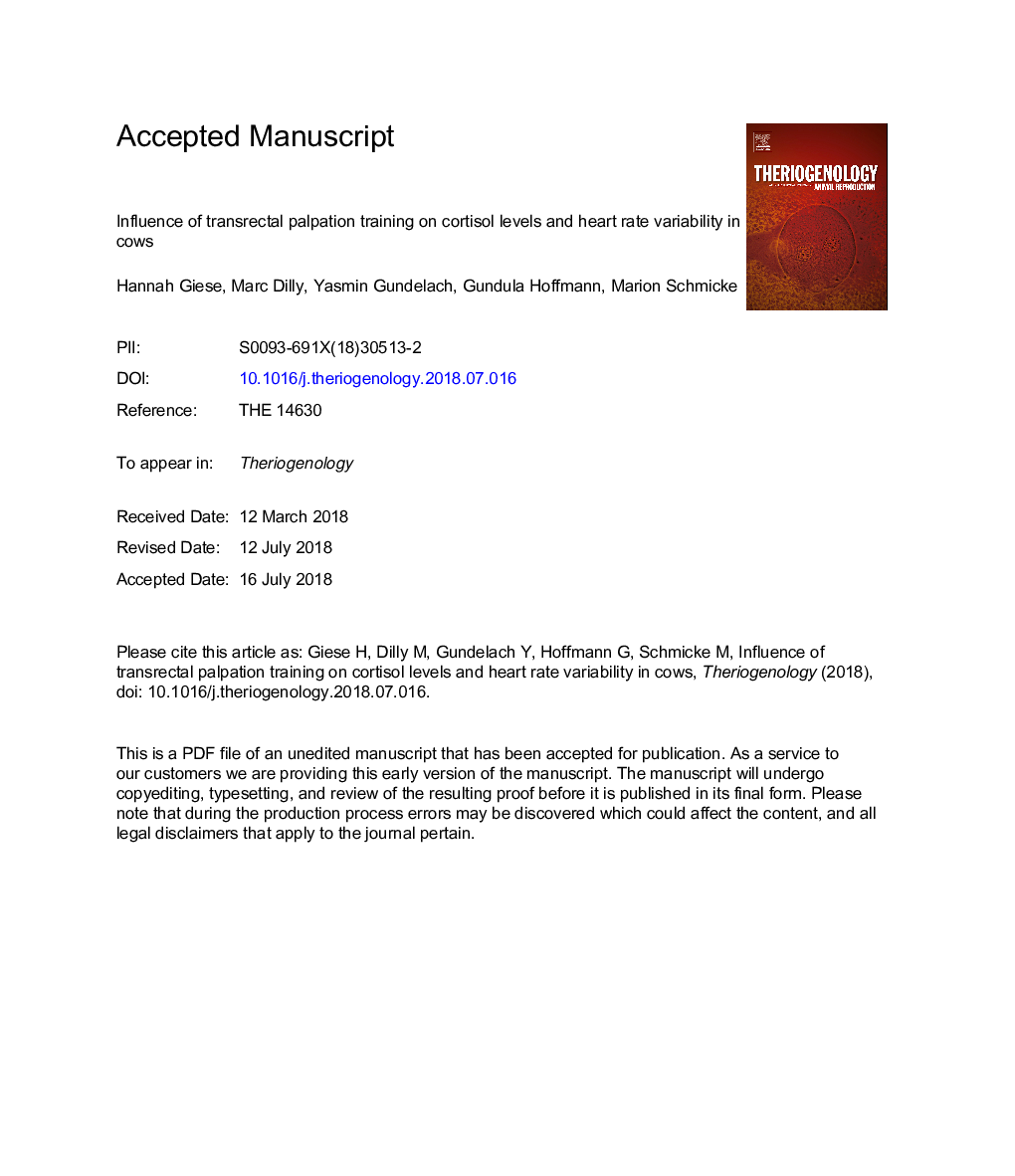| Article ID | Journal | Published Year | Pages | File Type |
|---|---|---|---|---|
| 8426376 | Theriogenology | 2018 | 21 Pages |
Abstract
A total of 12 cows of the experimental group were examined by two groups of students with different training on two days. The examination was performed one day by students who were theoretically prepared for transrectal palpation in cows (NO-SBT, nâ¯=â¯12). The other day, students who underwent a simulator-based training (SBT, nâ¯=â¯12) performed the examination. The cortisol concentrations, as well as heart rate (HR) and heart rate variability (HRV), were measured in the examined cows. Blood and saliva samples were collected 25â¯min and immediately before (0â¯min) and 25â¯min and 85â¯min after the end of the examination in the experimental group. Serum cortisol levels between 0â¯min and 25â¯min were increased by Î2.6â¯ng/ml in the cows in the experimental group compared to Î-0.3â¯ng/ml in the control group (Pâ¯=â¯0.001). The increases in cortisol in saliva (Pâ¯=â¯0.033) and serum (Pâ¯=â¯0.013) after transrectal palpation were higher in the NO-SBT group Î0.32â¯ng/ml saliva, Î5.8â¯ng/ml serum than in the SBT group Î0.03â¯ng/ml saliva, Î2.1â¯ng/ml serum. For HR and HRV analysis values recorded 30â¯min before the transrectal palpation (â30â¯min) were set as the baseline concentrations the sequence recorded during the transrectal examination started at 0â¯min. While the mean HR did not change significantly during the transrectal palpation (80-83 bpm SBT students; 81 to 79 bpm NO-SBT students), the HRV parameter square root of the mean squared differences of successive R-R intervals (RMSSD) decreased in the NO-SBT group (Pâ¯=â¯0.034) during transrectal palpation compared to the baseline values (17.47-5.07â¯ms). These findings reflect an activation of the hypothalamic-pituitary-adrenal axis as well as a reduction in vagal tone during the teaching and practice of transrectal palpation by students. Moreover, the results indicate that a transrectal palpation is less stressful for cows when the examination is performed by students that were previously prepared by simulator-based training.
Related Topics
Life Sciences
Agricultural and Biological Sciences
Animal Science and Zoology
Authors
Hannah Giese, Marc Dilly, Yasmin Gundelach, Gundula Hoffmann, Marion Schmicke,
